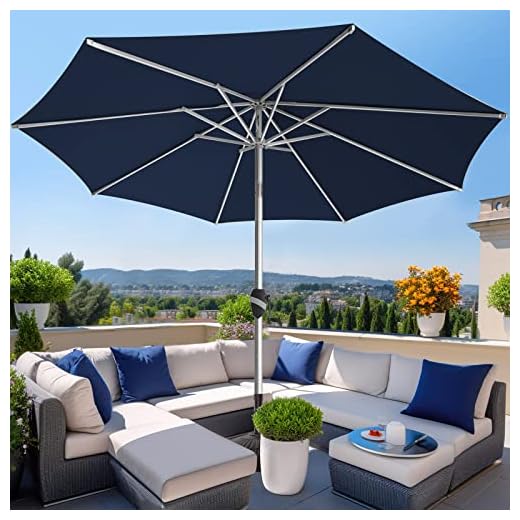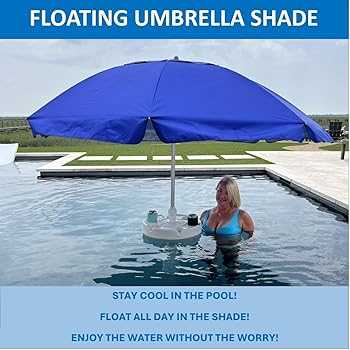


Polyester ranks high for structures exposed to chlorine and salt. Its durability and resistance to fading make it a prime candidate. If you’re seeking longevity, consider solution-dyed polyester, which offers superior color retention and UV protection.
For those prioritizing strength against wear and tear, acrylic is another strong option. This fabric withstands harsh elements and retains its color over time, making it a reliable choice for outdoor settings.
This guide caters to pool owners and enthusiasts looking to enhance their outdoor experience. By exploring the advantages and disadvantages of various fabrics, you’ll be equipped to make an informed decision that aligns with your needs.
Ultimately, both polyester and acrylic provide excellent durability and aesthetic appeal. Choosing the right fabric can significantly extend the lifespan of your outdoor shade solution and improve your enjoyment of your aquatic retreat.
Best Canopy Fabric for Chlorinated Swimming Environments
When selecting a cover for use near chlorinated swimming areas, synthetic fabrics like acrylic and polyester are highly recommended. These materials exhibit strong resistance to fading and degradation caused by exposure to chemicals and UV rays.
Acrylic fabric, in particular, boasts a water-repellent finish, making it an excellent choice for maintaining comfort and dryness. It is also breathable, allowing for air circulation while providing shade.
Key Features to Consider
- Durability: Look for fabrics that withstand harsh conditions, including salt and chlorine exposure.
- UV Resistance: Fabrics with UV protection will prevent fading and deterioration over time.
- Water Resistance: Choosing a water-repellent option will help keep the area dry and comfortable.
- Breathability: Materials that allow for air circulation help reduce heat buildup underneath.
Additionally, pay attention to the construction of the frame. Aluminum frames are preferable due to their lightweight, rust-resistant properties, ensuring longevity even in humid environments. Steel frames can offer more stability but may require additional coating to prevent corrosion.
In conclusion, prioritizing fabrics like acrylic or treated polyester, combined with a durable frame, will ensure a reliable shading solution that stands up to the challenges posed by chlorinated swimming areas.
Understanding Corrosion Resistance in Pool Umbrellas
Choosing a suitable canopy for areas exposed to high salinity requires careful attention to the materials used in construction. Corrosion resistance plays a significant role in prolonging the lifespan of these canopies, ensuring they withstand harsh environments without compromising functionality.
Materials like stainless steel and certain aluminum alloys provide robust defenses against corrosion, while fabrics treated with special coatings can enhance durability. The selection of these components directly influences the overall performance and longevity of the structure.
Key Factors in Corrosion Resistance
Several factors contribute to the corrosion resistance of outdoor canopies. These include:
- Material Composition: The choice of metal plays a crucial role. Stainless steel, particularly grades 316 and 304, is widely favored for its ability to resist rust and corrosion caused by seawater.
- Protective Coatings: Powder coating or anodizing can significantly enhance the resistance of aluminum components against salt corrosion.
- Fabric Treatments: High-quality fabrics that are treated to be water and UV resistant can prevent degradation over time.
Regular maintenance is also essential to ensure the longevity of these structures. Cleaning with fresh water after exposure to salt can prevent buildup that accelerates corrosion.
| Material | Corrosion Resistance | Maintenance |
|---|---|---|
| Stainless Steel | High | Regular cleaning recommended |
| Aluminum | Moderate to High with coatings | Wipe down to prevent salt accumulation |
| Fabric (Treated) | Variable | Wash periodically to maintain properties |
Investing in quality components and adhering to maintenance practices will ensure that outdoor canopies remain functional and aesthetically pleasing for years, even in challenging environments.
Evaluating Fabric Choices for UV Protection and Durability
Choosing the right fabric for sun protection involves considering UV resistance and durability, especially in environments with high salinity. Fabrics that resist fading and degradation from sun exposure will maintain their appearance and functionality over time.
Commonly used textiles include solution-dyed acrylic and polyester blends. Solution-dyed materials offer exceptional colorfastness and UV stability, while polyester blends provide enhanced durability against wear and tear, making them suitable for outdoor use.
Key Factors to Consider
- UV Resistance: Fabrics should have a high UV protection factor (UPF) to effectively block harmful rays.
- Water Resistance: Materials with water-repellent coatings can prevent damage from splashes and moisture.
- Colorfastness: Look for textiles that retain their color despite prolonged sun exposure.
- Breathability: Fabrics should allow air circulation to prevent heat buildup.
Testing for these characteristics is vital. Fabrics can undergo laboratory assessments to determine their UV protection levels and durability against environmental factors.
In conclusion, selecting the right fabric requires an evaluation of UV resistance and durability to ensure long-lasting protection and aesthetic appeal in outdoor settings.
Comparing Frame Materials for Longevity in Saltwater Environments
Stainless steel and aluminum are two prevalent choices for frameworks exposed to saline conditions. Stainless steel is known for its resistance to corrosion, particularly high-grade options like 316 stainless steel, which is specifically designed to withstand harsh environments, including marine settings. Aluminum, on the other hand, is lightweight and does not rust, making it a practical alternative, although it may require additional coatings for enhanced durability against salt exposure.
When evaluating these options, it’s essential to consider the maintenance requirements and longevity. Stainless steel may require periodic cleaning to prevent pitting and staining, whereas aluminum can benefit from anodization, which improves its resistance to corrosion. Both materials can perform well, but their longevity will largely depend on the specific environmental conditions and care taken.
Durability Comparison
| Frame Material | Corrosion Resistance | Weight | Maintenance |
|---|---|---|---|
| Stainless Steel | High (especially 316 grade) | Moderate | Periodic cleaning required |
| Aluminum | Moderate (with anodization) | Light | Less maintenance needed |
In addition, the choice between these two materials can also impact the aesthetic appeal and overall weight of the structure. Stainless steel offers a sleek and polished look, while aluminum can be finished in various colors, providing versatility in design. Consider the location and specific exposure to elements when making a decision.
Ultimately, both stainless steel and aluminum have distinct advantages. Selecting the right frame material will hinge on individual preferences regarding appearance, weight, and maintenance commitment, while also taking into account the unique challenges presented by a saline atmosphere.
Maintenance Tips for Extending the Life of Your Pool Shade Structure
Regular cleaning is paramount. Use a gentle soap solution and a soft brush to remove any debris, salt, or chlorine residues that accumulate over time. Rinse thoroughly with fresh water to prevent any chemical buildup that could degrade the fabric.
Proper storage during off-seasons will also prolong its lifespan. If possible, disassemble and store the shade in a dry, cool location to protect it from harsh weather conditions.
Additional Care Suggestions
- Check for Damage: Regularly inspect for tears or fraying. Small issues can be repaired with fabric adhesive or patches to prevent further deterioration.
- Use a Cover: When not in use, covering the structure can protect it from UV rays and environmental elements.
- Position Wisely: Ensure that the structure is positioned away from strong winds and direct exposure to corrosive elements.
- Adjust Height: Lowering the structure during windy conditions can help prevent damage.
By following these maintenance tips, you can significantly extend the lifespan of your shade, ensuring that it remains a reliable source of protection and comfort for years to come.
Best umbrella material for salt water pool
Features
| Part Number | CB-SS16ET252525GYW |
| Model | SS16ET252525GYW |
| Color | Sand |
| Size | 25'x25'x25' |
Features
| Warranty | 2-Year Warranty |
| Color | Black |
| Size | 9 FT Commercial Frame |
Features
| Part Number | W1-6-9 |
| Model | W1-6-9 |
| Color | Navy Blue |
| Size | 9 FT |
Video:
FAQ:
What materials are best for umbrellas used around saltwater pools?
The best materials for umbrellas around saltwater pools include high-quality aluminum for the frame and marine-grade fabrics for the canopy. Aluminum is resistant to rust and corrosion, making it an excellent choice for saltwater environments. Marine-grade fabrics, such as solution-dyed acrylic or polyester, provide durability and fade resistance while also being able to withstand the harsh conditions associated with saltwater exposure.
How does saltwater affect umbrella materials over time?
Saltwater can be harsh on various materials, leading to corrosion and deterioration. Metal components, like those found in umbrella frames, can rust if not made from rust-resistant materials. Fabrics may also suffer from salt residue buildup, which can lead to fading and weakening of the material. To mitigate these effects, it’s crucial to choose materials specifically designed for marine environments and to regularly clean and maintain the umbrellas.
Are there any maintenance tips for umbrellas in saltwater pool areas?
Yes, maintaining umbrellas in saltwater pool areas involves a few key steps. First, rinse the umbrella with fresh water after exposure to saltwater to remove any residue. This helps prevent corrosion and fabric damage. Second, inspect the umbrella regularly for any signs of wear, such as fraying fabric or rusted hardware, and address any issues promptly. Lastly, when not in use, consider storing the umbrella in a dry place to prolong its life.
Can I use a standard pool umbrella for a saltwater pool?
Using a standard pool umbrella for a saltwater pool is not recommended as these umbrellas may not be designed to withstand the corrosive effects of saltwater. Standard umbrellas often use materials that can corrode or degrade faster in such environments. It is better to invest in umbrellas specifically designed for saltwater exposure, as they are made from rust-resistant frames and durable, weather-resistant fabrics.








